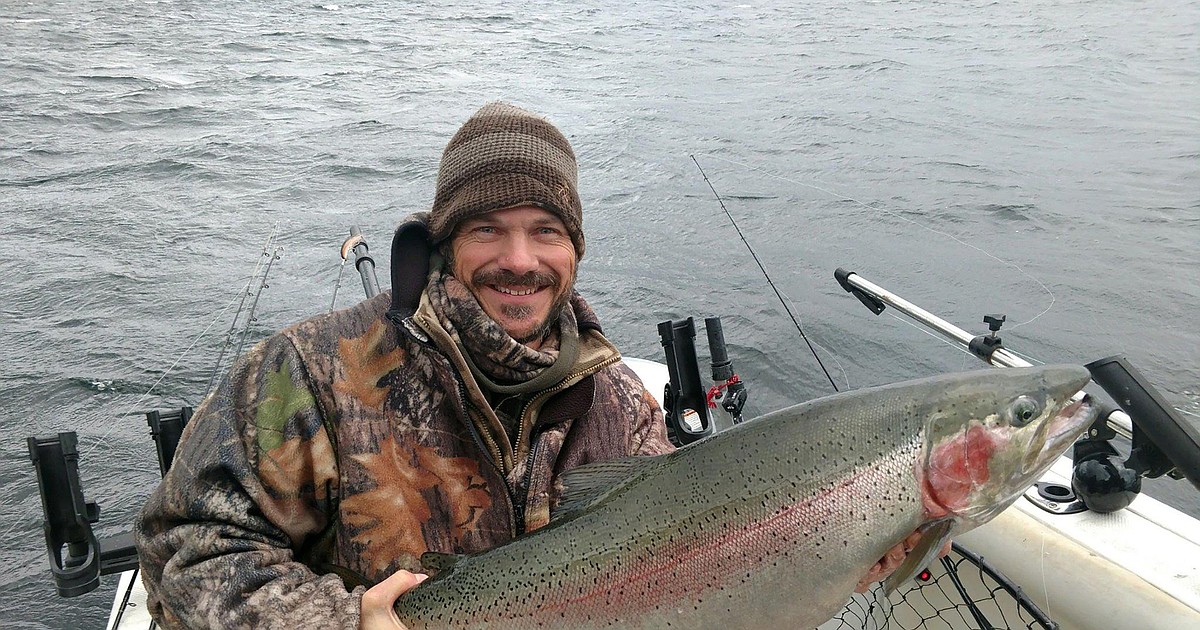Copyright HuffPost

When you buy your favorite frozen salmon or tilapia, be careful –– a common way to defrost this grocery staple could make you seriously ill. That’s because a lot of frozen fish comes vacuum-sealed in plastic for freshness, and too many people are thawing the fish in its packaging, specifically by heating their plastic-sealed fish in the microwave or in hot water. This mistake makes people more susceptible to botulism, a dangerous and potentially deadly foodborne illness. Unfortunately, this food safety risk is apparently not common knowledge. On social media, TikTokers have gone viral after sharing that they didn’t know that thawing frozen fish in its vacuum-sealed packaging can be bad for you. Advertisement “Everyday I learn something new that makes me wonder how I’ve made it this far,” one TikToker commented. Let this article be your reminder that this kind of food preparation can, in fact, be very bad for you. Here’s why. Why You Should Never Heat Up Vacuum-Sealed Fish In Its Packaging Advertisement Botulism is “a disease that’s caused by the microorganism Clostridium botulinum,” explained Donald Schaffner, a food science expert at Rutgers University and co-host of the “Food Safety Talk” podcast. “And this is an anaerobic organism that will only grow in the absence of oxygen, and so that’s why we’re worried about vacuum packaging.” The longer you thaw your fish in this low-oxygen environment of plastic packaging, the greater your risk of botulism. “Every fish” is potentially at risk for this disease if it’s thawed in this way, Schaffner said. “As the fish warms up, those spores of the organism [Clostridium botulinum] may be able to start to grow,” Schaffner continued. “And if they grow, the spores germinate. They make cells. ... The cells make toxin. And you might have a situation where you get somebody getting sick with botulism.” Advertisement Contaminated food is a common source of botulism, according to the Centers for Disease Control and Prevention, often from canned, preserved or fermented homemade foods. And you really don’t want to consume bacteria that make botulinum toxin, because the symptoms of foodborne botulism are not like the stomachaches associated with most mild food poisoning. Botulism from eating contaminated food can cause vomiting, nausea, diarrhea, muscle weakness and difficulty breathing. The botulinum toxin will bind “irreversibly to nerve endings,” Schaffner said. “So if you get enough of a dose, what happens is that you get paralyzed.” In the worst cases, your lungs get paralyzed and you suffocate. Advertisement A Safer Way To Thaw Frozen Fish The best way to prep frozen fish is to simply take it out of its packaging to thaw. This way, your thawing fish is no longer in a risky environment with no oxygen. “You could even break the seal and kind of leave it in the packaging to kind of contain the juices,” Schaffner said. Schaffner said that if he bought a frozen fish, he would immediately remove it from its plastic packaging. “I would maybe transfer it to a secondary container, a Tupperware container. ... I would let the fish thaw overnight in the refrigerator.” If his fish was still too frozen the next day, then he would put it on the thaw setting in the microwave. Advertisement Of course, if you forget to do this food preparation, don’t panic. Your packaged frozen fish is not going to become toxic right away if you leave it out at room temperature. If you leave your salmon to thaw in its vacuum-sealed packaging one or two hours on your counter, you should still be fine to eat the fish. “One hour is fine. Two hours, I’m beginning to worry. Four hours, I’m worrying more, and overnight, you should toss it,” Schaffner advised. YourSupportMakes The Story Your SupportFuelsOur Mission Your SupportFuelsOur Mission Join Those Who Make It Possible HuffPost stands apart because we report for the people, not the powerful. Our journalism is fearless, inclusive, and unfiltered. Join the membership program and help strengthen news that puts people first. We remain committed to providing you with the unflinching, fact-based journalism everyone deserves. Thank you again for your support along the way. We’re truly grateful for readers like you! Your initial support helped get us here and bolstered our newsroom, which kept us strong during uncertain times. Now as we continue, we need your help more than ever. We hope you will join us once again. We remain committed to providing you with the unflinching, fact-based journalism everyone deserves. Thank you again for your support along the way. We’re truly grateful for readers like you! Your initial support helped get us here and bolstered our newsroom, which kept us strong during uncertain times. Now as we continue, we need your help more than ever. We hope you will join us once again. Support HuffPost Already a member? Log in to hide these messages. This time period is in alignment with the “Danger Zone” — the FDA warns against keeping food between the temperatures of 40-140 degrees Fahrenheit for more than two hours, as bacteria is known to multiply rapidly beyond that point. Advertisement



